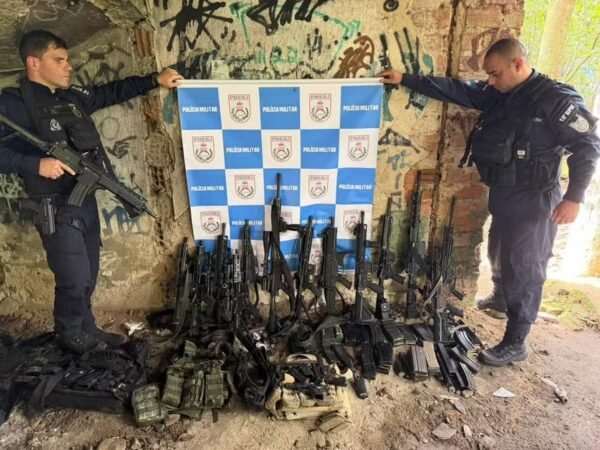The Rio das Pedras, Gardênia Azul, and Muzema region, located in Rio’s Southwest Zone, may become the starting point for reclaiming territories long dominated by organized crime, as determined by the Federal Supreme Court (STF) in the “ADPF das Favelas” ruling. This area has become emblematic of the complex relationship between state absence, urban growth, and criminal control in Rio de Janeiro. The state government is considering launching the pilot phase of the reoccupation initiative in Itanhangá, an area that holds not only symbolic but also strategic importance for public security forces—and for criminal organizations seeking to consolidate their influence. The project is seen as a potential milestone in restoring institutional presence, rebuilding public trust, and reestablishing the rule of law in one of the city’s most contested regions.
This Content Is Only For Subscribers
To unlock this content, subscribe to INTERLIRA Reports.
Strategic Region
This area is considered strategic for three main reasons: the coexistence of Rio’s main criminal groups (Red Command, militia, and Third Pure Command), its position between Recreio and the Tijuca Massif—forming a corridor that facilitates escape routes and logistics—and its concentration of urban and economic expansion zones with dense populations.
CV Dominance
In the past two years, the Red Command (CV) has attacked at least ten communities in the new Southwest Zone as part of an offensive to establish a “control belt” stretching from Recreio dos Bandeirantes to the Tijuca Massif. This strategy aims to secure a territorial corridor by enabling escape routes through the Tijuca Forest while extending access to expanding urban and economic areas.
TCP
Meanwhile, militias and members of the Third Pure Command (TCP) have fortified their positions, turning the area into one of Rio’s most volatile conflict zones. Communities such as Muzema, Morro do Banco, Sítio do Pai João, Tijuquinha, Gardênia Azul, and Rio das Pedras—the latter seen as the historical cradle of the city’s militias—remain hotly contested.
Militia
Currently, paramilitary control in the area extends mainly over Curicica, Dois Irmãos, Colônia, and Rio das Pedras, while the CV advances into other parts of the region. Morro Dois Irmãos, in Curicica, has become one of the most intense conflict points. In late September, traffickers from Cidade de Deus attempted to invade the community but were repelled during a police raid that left six CV members dead.
Recent Disputes and Arrests
On Monday (13/10), the Military Police arrested 14 suspected militiamen in Jacarepaguá and seized 12 rifles, 43 magazines, two pistols, and a revolver from an unfinished building in Colônia Juliano Moreira, Curicica. According to the police, the suspects were apparently part of a group led by militia leader André Costa Barros, known as André Boto, who has been imprisoned since 2021. They were reportedly tasked with preventing further CV incursions. The operation—valued at R$1 million in seized weapons—was part of Operation Containment, aimed at halting factional expansion across the Southwest Zone.
Government Plan
According to Rio’s Public Security Secretary, Victor Santos, the decision to launch the reoccupation project in the Southwest Zone reflects both the region’s economic growth potential and the need to restore state presence in territories dominated by armed groups. Santos emphasized that Rio’s economic focus has gradually shifted from the city center toward this expanding area.
Main Items
Among the 18 measures ordered by the Supreme Federal Court (STF) to reduce police lethality and improve operational transparency, three had compliance deadlines on Wednesday (15/10). The state government reported that all were fulfilled:
- Body and vehicle cameras: All Military Police officers and Civil Police Core units now use these devices. By the end of November, each vehicle must be equipped with three cameras.
- Ambulances in operations: Security forces currently have 12 ambulances—two armored—available for deployment during police missions.
- Mental health care: The government states that psychological support services are already in place for public security personnel.
Analysis:
The planned reoccupation of Rio’s Southwest Zone, particularly in Rio das Pedras, Gardênia Azul, and Muzema, represents one of the most ambitious public security efforts in recent years. These areas have long operated under a parallel power structure, where the state’s absence allowed criminal factions—mainly militias and the Red Command—to dominate daily life, regulate local economies, and control access to essential services. The initiative, emerging from the Supreme Federal Court’s “ADPF das Favelas” ruling, signals an institutional attempt to reassert lawful governance and restore state legitimacy in territories historically abandoned by public authorities.
The current configuration of criminal power in the region demonstrates the scale of the challenge. The coexistence of competing groups—the Red Command, militias, and the Third Pure Command—has turned the area into a dynamic battleground. The Red Command’s expansion strategy toward the Tijuca Massif seeks to secure strategic corridors and economic assets, while militias remain entrenched in areas like Curicica and Rio das Pedras, where they have deep social and economic roots.




